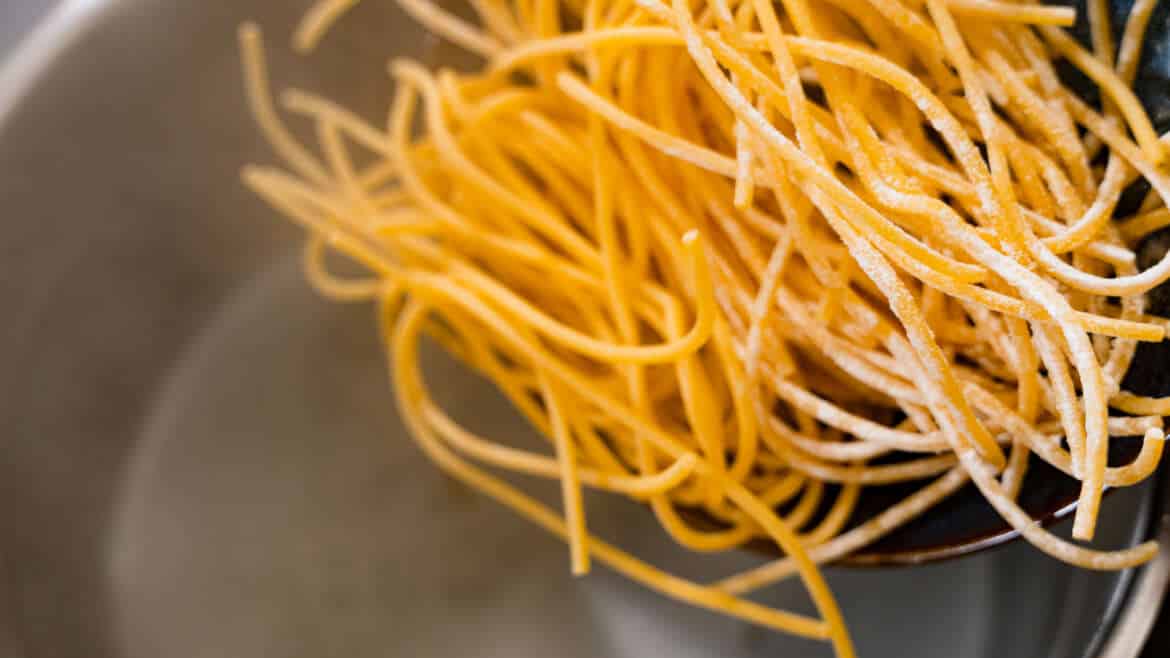Knowing how to cook a dish of pasta might seem like the easiest thing in the world for an Italian. We start doing it practically as children, see grandparents and parents do it, and it becomes so natural that it needs no explanation.
However, for those who do not grow up eating pasta, things may be a bit more complicated. Plenty of people make mistakes, even trivial ones, when cooking pasta, and we are here to correct them. Because it is from cooking pasta that a successful recipe begins.
In this article we discover 5 pasta cooking mistakes that are very common and can really ruin a good dish!
Cooking pasta: 5 mistakes
Toss the pasta when the water is cold
This is probably the most common and also the most serious mistake you can make in cooking pasta. Pasta should be tossed when the water boils, not before. And two or three bubbles are not enough to consider the water boiling!
If you toss the pasta when the water is still cold, it will take much longer to reach the boiling point and the cooking cannot be uniform. In addition, the absorption of the salt will also be uneven: the salt must dissolve in the hot water in order to penetrate well into the pasta.
If you want to speed up the boiling time, better put a lid on the pot!
Using the wrong measure of salt
Another big mistake in cooking pasta concerns the amount of salt used. It is not uncommon to use too much or too little salt. The ideal amount should be 10 grams per liter of water, although there are small variations to consider.
In particular, the type of sauce with which you are going to season the pasta: very tasty and savory sauces, such as fish sauces or Puttanesca, can include even a smaller amount of salt because they already contain very salty ingredients.
In general, however, the 10-gram rule is effective!
Cooking pasta in a small pot
The pasta must have enough space to cook so it is important to use a sufficiently large pot. As a rule of thumb, consider using one liter of water for every 100 grams of pasta.
This way, the pasta will have the space it needs to grow and will not stick to the pot. In addition, you will also be able to turn it better, preventing the formation of clusters of pasta that you wouldn’t want to find on your plate!
If we are talking about spaghetti, then the advice is to find a pot that is not only large but also tall, otherwise the pasta will not cook uniformly.
Overcooking the pasta
It sounds simple but, evidently, it is not!
Pasta, done properly as we eat it in Italy, must be strictly al dente. To avoid getting it wrong, the first tip is to check the cooking time on the package. If we’re talking about fresh pasta, however, taste it to make sure you don’t drain it when it’s too late! However, tasting is always a good indicator to know when to drain.
If you want to toss the pasta back into the pan with the sauce, drain it even two minutes beforehand: this way it will finish cooking in the pan without becoming overcooked.
Drain the pasta too much
Finally, it comes time to drain the pasta, and even in this step, error is around the corner!
In fact, many people tend to throw away the cooking water completely, making sure that the pasta is perfectly dry before serving it. In reality, it is a good habit to leave the pasta moist to prevent it from remaining dry and therefore unappetizing once it is seasoned.
A real pro tip is then to keep some of the cooking water aside. This contains starch, which is released from the pasta and helps bind the sauce, creating a delicious cream.
Do you make these mistakes in cooking pasta?
We don’t want you to answer, because we know you won’t commit them from now on!
What are you waiting for to put into practice all the new tricks we have revealed to you? Run to the kitchen and prepare an amazing pasta dish.

